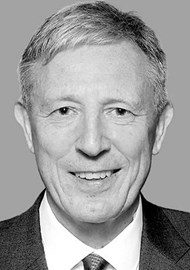Let us just read those two paragraphs together.
“(iii) The anaesthetic drug record was skeletal. There was an absence of detailed written records of the dosages of drugs, the time of administration or the route of administration.
(iv) There was no written record of the monitored variables (vital signs) from the Mindray monitor during or in the recovery phase of the procedure.
Let us take this opportunity to catch up on a bit of time by looking at further “reasons” given by the Judge.
“(v) There were no written records of the operation which should include the name of the person performing the operation, the site on the body where the surgery is being performed, the posture of Lee nor the amount of fat aspirated during the liposuction and how the wounds were sutured.
(vi) No supplemental oxygen was given despite the combination of sedative drugs administered, particularly the drug propofol.”
I am here with the Anaesthetic Record before me. What was the Judge going on about? “Skeletal”? The baseline sex, weight, BP and heart rate are recorded. Gentamicin, 80mg in 500 NS infusion has been given and then the times and dosages of dormicom 1mg/ml, propofol 100mg/ml and pethidine 10mg/ml are clearly recorded. How can the Judge say that there is “absence of detailed written records”? I return to the baseline that we cannot blame the Judge for this stupidity. It is the system that places the Judge as an interpreter of “truths” and sadly, susceptible to false information. The anaesthetic record was perfectly satisfactory.
I do have one query that remains unresolved: 20mg of IV pethidine was recorded as having been given at 1:48 and at 2:00. Why? Dr Kwan has recalled that here was some problem with the cannula and the first dose was not given but this was seven years ago. I do not know if this was relevant but that is always a problem when looking at matters that occurred years before. One could postulate that the first dose had tissued and there was a delay in it becoming systemically effective.
With regard to point (iv), again an embarrassing misunderstanding on behalf of the Judge. When we have automatic recording devices that are capable of printing out a record of the stored parameters it is not customary to make a handwritten copy of the monitoring machine data. Unfortunately, the Mindray monitor was seized by the police and had been in storage for seven years. I do not know if it was loaded with paper or programmed to print out the parameters of the physiological response during the procedure. This was not conclusively discussed during the trial, leaving the Judge to make yet another unwise and unfounded conclusion.
With regard to (v), again I am not sure what reference points are being used. The Medical Experts for the prosecution seemed critically unaware of the realities of cosmetic surgery practice in Hong Kong. Having had to review quite a number of cases for medico-legal purposes I can say that the standard of practice in University Teaching Hospitals is not the same as that followed in the majority of private clinics. Again, we have to look at this specific case and it was obvious that Dr Kwan had a scheduling conflict. The operation had taken longer than anticipated and when it was completed Dr Kwan left. According to the Judge, Dr Kwan left not intending to return. The evidence for this is highly speculative and revolves around a garbled transcription of indistinct verbal communication and recall of conversations held seven years before. When there are scheduling conflicts it is quite usual and appropriate to write the operation record when other pressing matters have been resolved. In this case, the sequence of events involving the tragic demise of the patient resulted in the police seizing records before they could be completed. Point (v) is inappropriate and unfortunate.
Point (vi) is a vexed question. Dr Mainland insisted that supplemental oxygen is mandatory if propofol is being used in order to prevent hypoxaemia. The problem is that this is not a view shared by all physicians and there is a school of thought that supplemental oxygen should be given when indicated by falling or low levels of oxygen saturation in the blood. (Moss BJ, Sargsyan Z. Things We Do For No Reason™: Supplemental Oxygen for Patients without Hypoxemia. Journal of Hospital Medicine 2020;15(4):242-4.)
This is a good example of Dr Mainland stating her opinion as fact and misleading the Judge and the Jury. The CCTV recording did show the Mindray alarming frequently, but not constantly as suggested by the Judge. Silencing the alarm does not turn off the monitor but silences the response for two minutes. The alarm begins again if the measured parameter is outwith the preset levels. If the patient has hypoxia and is not being given supplemental oxygen the alarm will repeat at two minutes after being silenced. However, the alarm was not occurring every two minutes and also was not responding exclusively to changes in oxygen saturation. It was observed that the alarms were frequently associated with movement by the patient, which is a common observation.
Whether or not supplemental oxygen was indicated for treatment was not established on the basis of the evidence presented.
So, in this respect there are serious questions related to points in para 59 (iii) – (vi) in the Judge’s justification for imposing an immediate custodial sentence. Were they based on evidence or opinion? Were they subjective or objective? Were they valid?
In the next blog I want to consider the final two points in para 59 which I think are of genuine concern.




